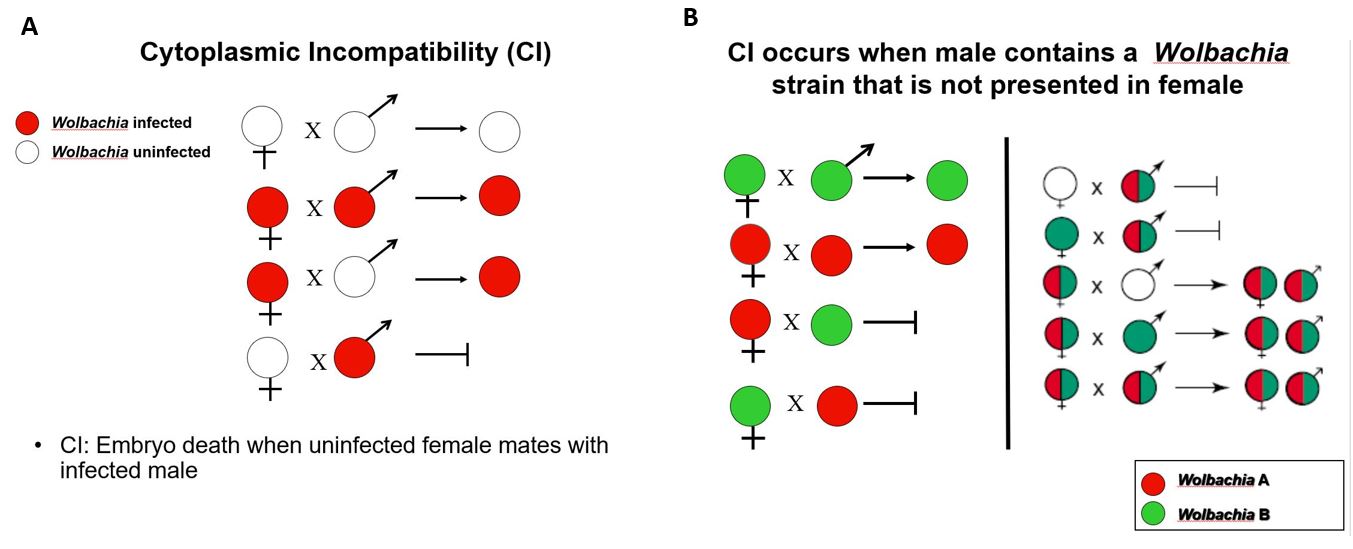Wolbachia is a gram-negative endosymbiont bacterium that is estimated to infect >65% of the insect species and a large number of other taxa, including archanids, freshwater crustaceans, and nematodes. It is maternally transmitted from mother to offspring and is well known for exhibiting a phenotype called cytoplasmic incompatibility (CI), in which embryonic death occurs when infected males mate with either uninfected females or infected females carrying different type of Wolbachia. Wolbachia causes modification of the sperm during spermatogenesis in the male. The uninfected eggs fertilized by the modified sperm stop developing at an early stage. In order to rescue these modifications, a similar Wolbachia type has to be present in the eggs, leading to fertilization, zygote formation, and successful embryonic development. In contrast to uninfected eggs, infected eggs can be successfully fertilized by sperm from both uninfected males and males infected with the same type of Wolbachia. Thus, the infected female has an additional advantage in reproduction over the uninfected female, allowing Wolbachia to invade an uninfected population. In this situation, the incompatibility occurs in one direction, referred to as unidirectional CI. When individuals within a population are infected with different type of Wolbachia, crosses between the individuals carrying the different infections are incompatible in both directions, resulting in a so-called bidirectional CI. Further details can be seen in the book chapter
Genetic control of malaria and dengue using Wolbachia.




